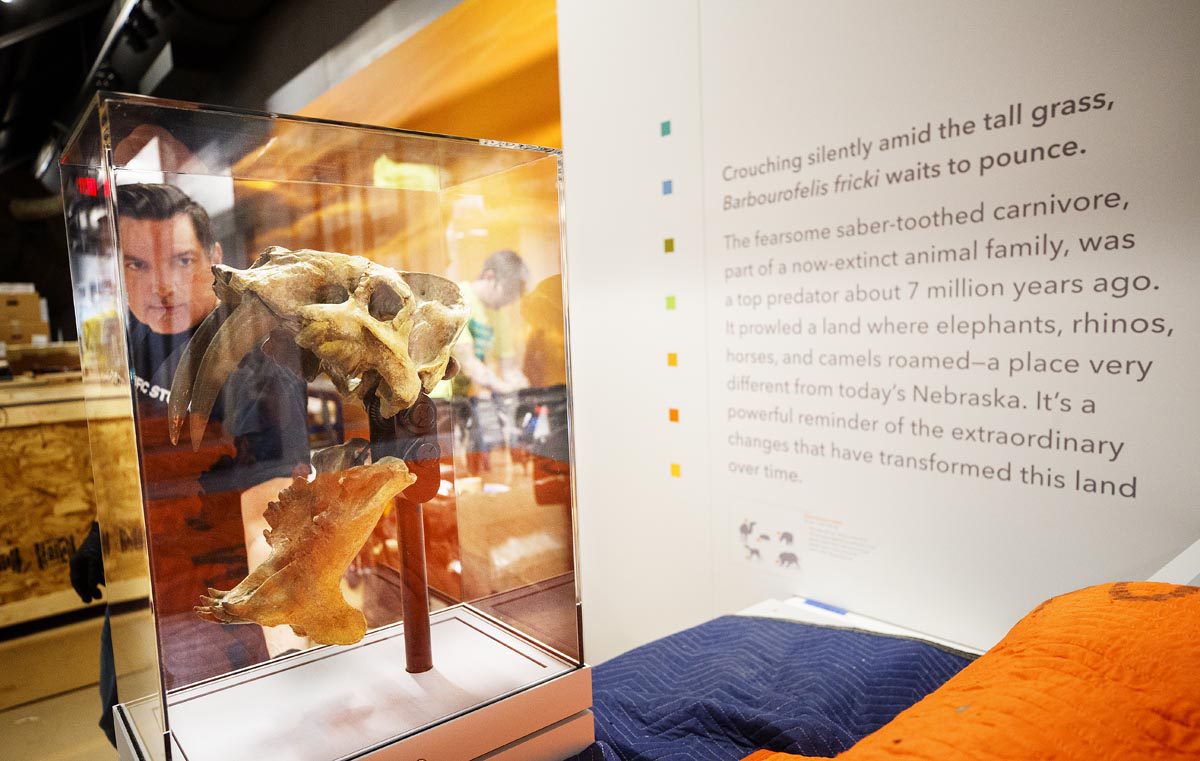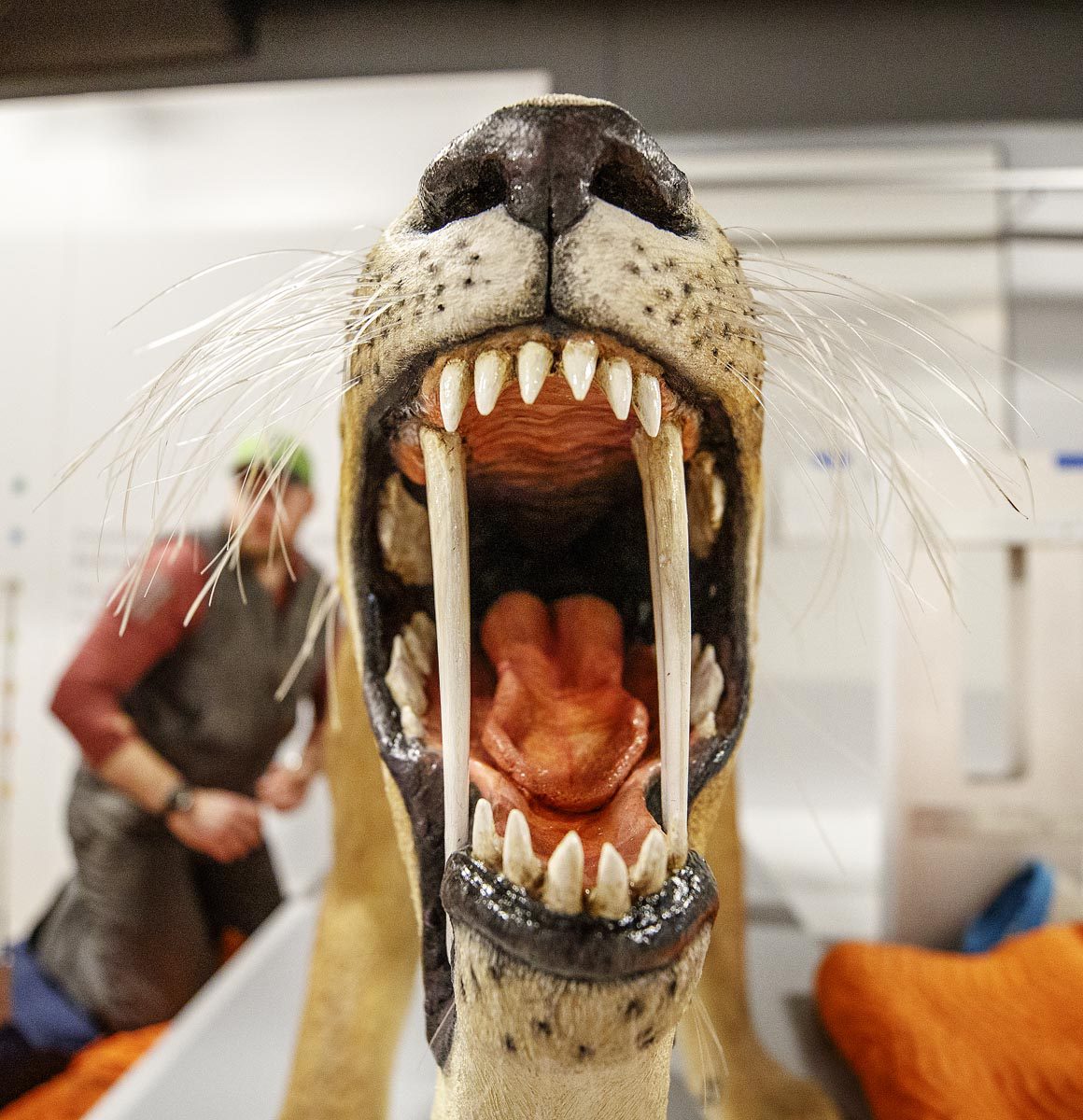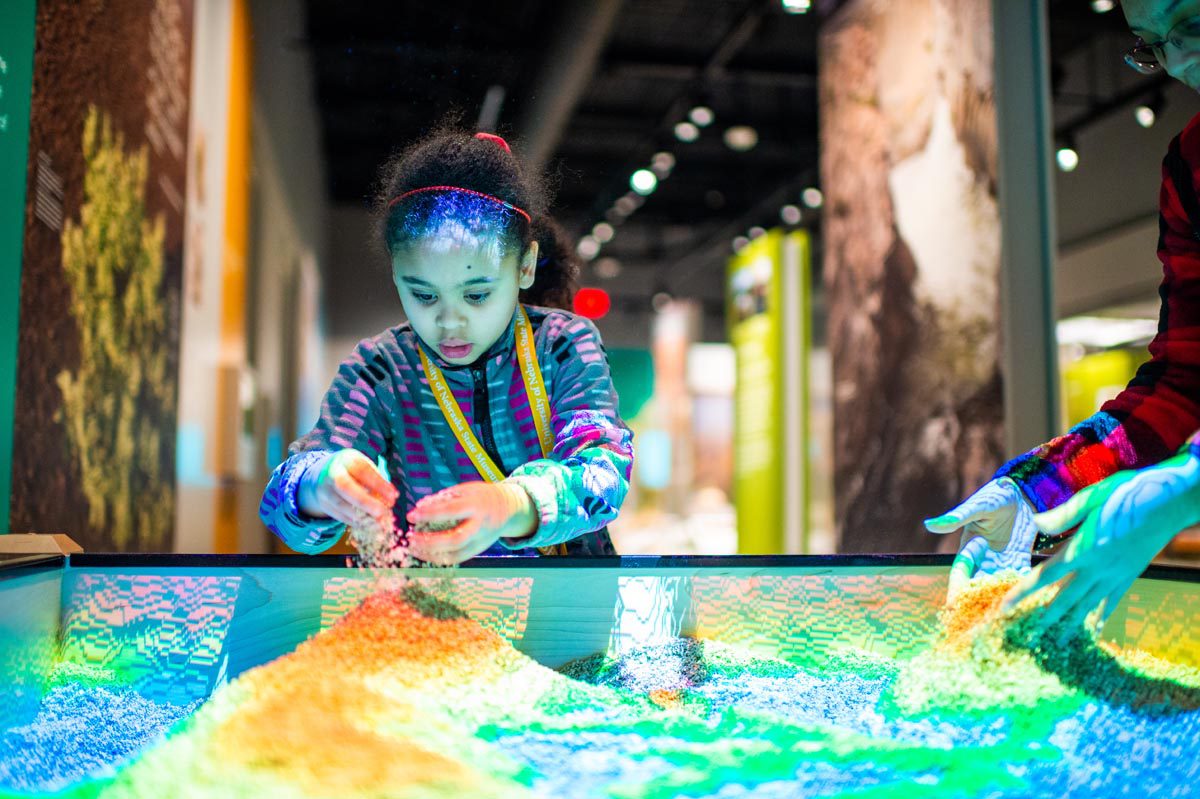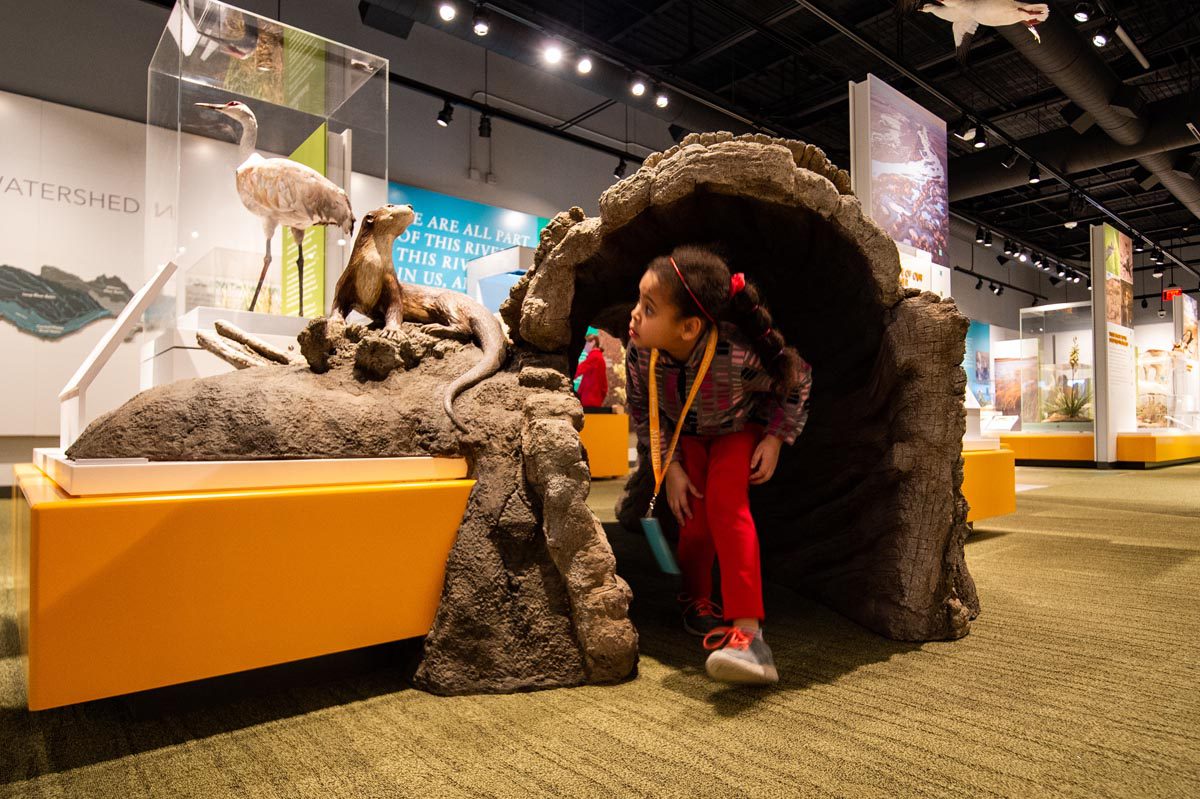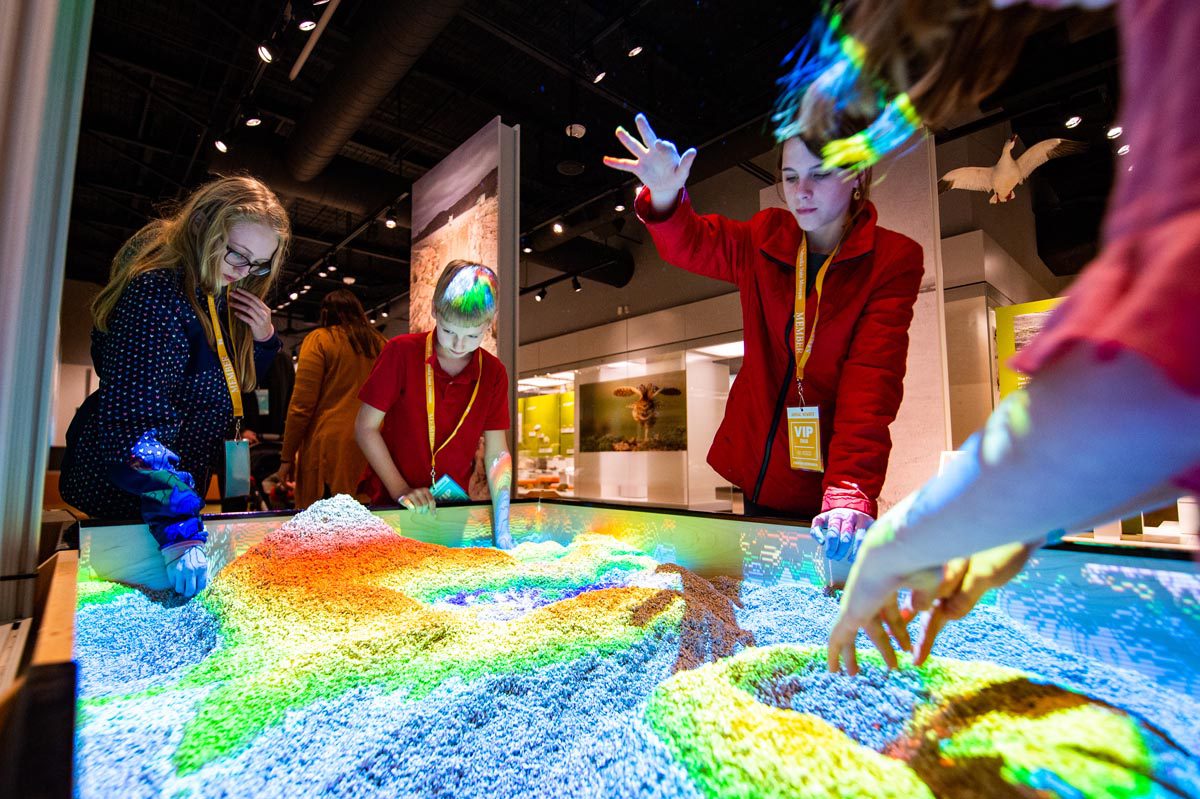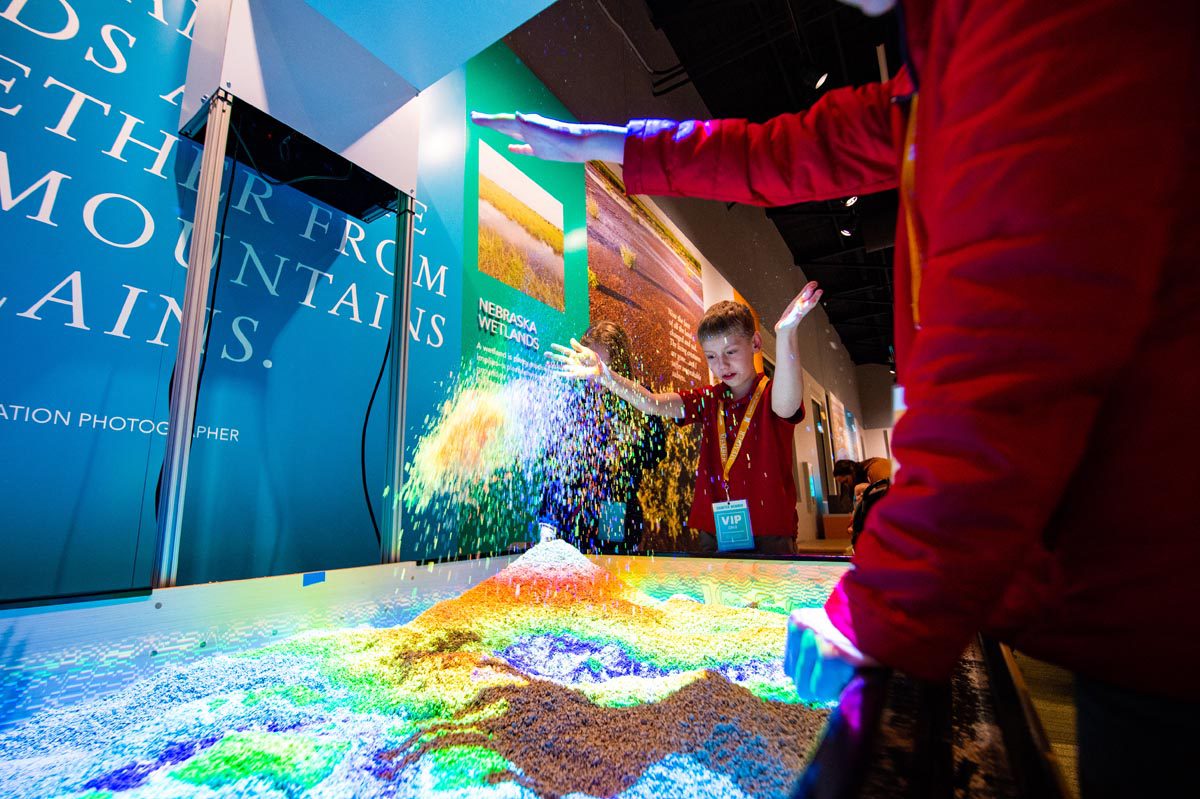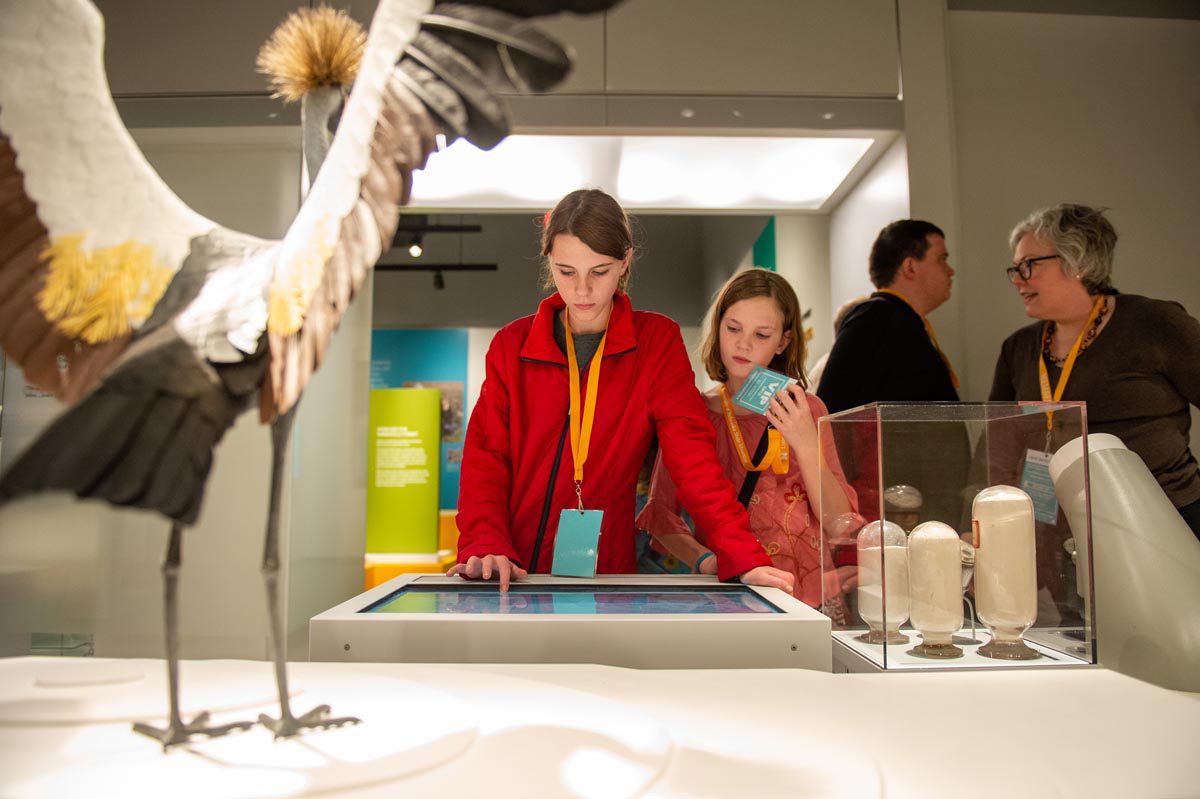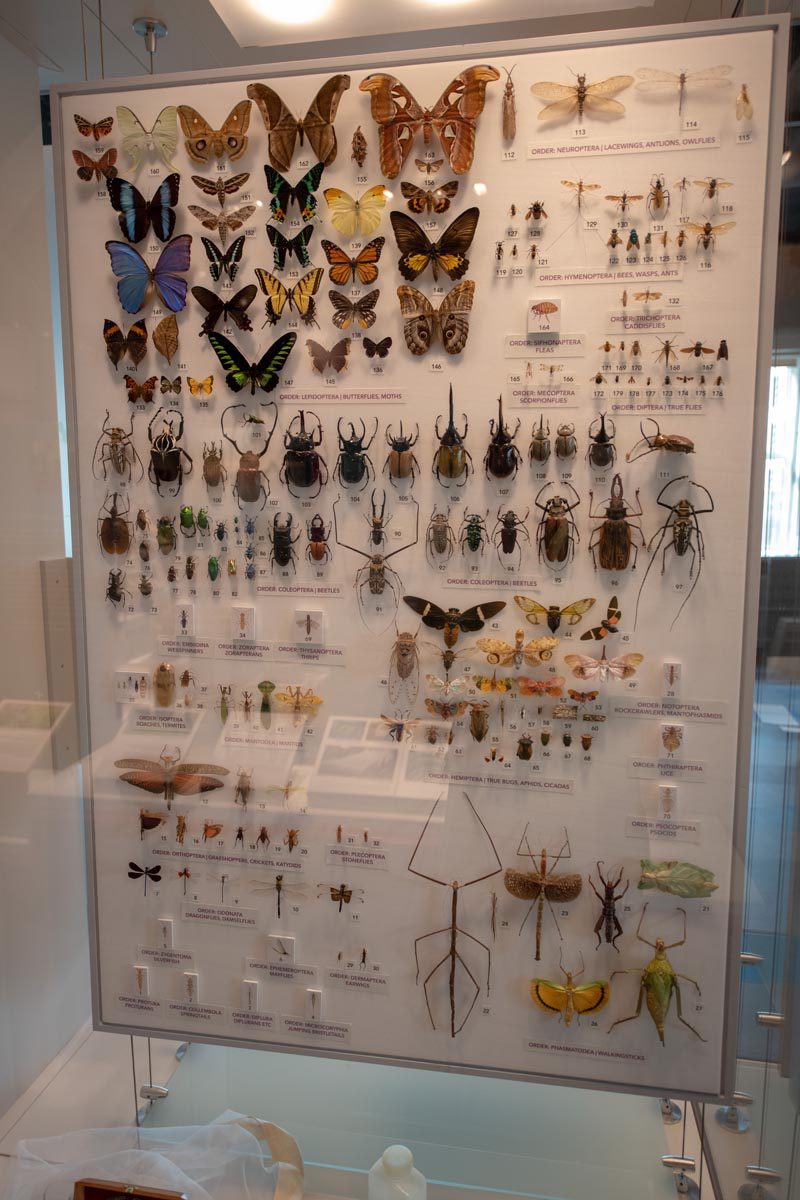Great Plains Exhibits Illustrate Global Story
An interactive celebration of Nebraska’s natural history and culture unfolds for visitors to the recently expanded University of Nebraska State Museum. These local examples illustrate a global story.
“Cherish Nebraska,” Morrill Hall’s five-year, $11.4 million expansion, opened in February 2019. Seven new galleries cover 11,000 square feet and highlight Nebraska’s natural and cultural heritage.
Interactive exhibits engage the senses with touchscreens, games, microscopes and a “Visible Lab” where visitors can watch researchers examine fossils, plants and other specimens being prepared for the collections. Crawl-through spaces invite children to explore different environments, such as a hollow cottonwood log. A rattlesnake den plays the species’ warning sound.
These exhibits have engaged thousands of visitors since the opening, helping fulfill a goal of strengthening links between university research and the public.
“The space is a science communication platform for researchers,” said Susan Weller, museum director and professor of entomology. “If research stays only within the science community, it’s not helping to move the public dialogue.”
That’s why Weller tapped more than 50 researchers across the university, state and world to contribute to exhibits. They include Clint Rowe, one of Nebraska’s foremost climate scientists. Through the gallery’s 5-foot-wide digital globe, which features short films about climate change, he shares his knowledge with the public.
“The museum is the science face of the university,” said Rowe, professor of earth and atmospheric sciences. “It’s a place where people bring their kids and grandkids. It’s where you can display your research in a way that interests the public.”
With diverse exhibits, researchers from wide-ranging disciplines can find ways to share their passion, Weller said. Many displays focus on climate change’s impact on Nebraska ecosystems. Others provide guidance on cherishing natural resources, with exhibits on water quality and carbon footprints.
Though exhibits are Nebraska-based, they illustrate global patterns. They also highlight the state’s unique crossroads position, where East meets West and North meets South. Weller wants visitors to see how this positions Nebraska researchers to solve future challenges.
“Nebraska will lead the way in feeding the future population of 9 billion people and managing natural resources wisely,” Weller said.
Major contributors to the privately funded expansion include the Nebraska-based Theodore F. and Claire M. Hubbard Family Foundation, the Claire M. Hubbard Foundation, the William and Ruth Scott Family Foundation, the Donald F. and Mildred Topp Othmer Endowment, and the Nebraska Environmental Trust.
Additional content
Nebraska news release: Morrill Hall expansion to help visitors ‘Cherish Nebraska’
Nebraska Faculty 101 Podcast: The Journey to Open Cherish Nebraska
Media mention: Cherish Nebraska (Nebraska Quarterly, Fall 2019)
Media mention: Morrill Hall debuts $11.4M ‘Cherish Nebraska’ exhibit (Lincoln Journal Star, 2/16/2019)

